The role of the BSA radiologist
In the first phase the radiologist works alone, performing one of the two initial readings of the mammogram. There is also a close association with the medical radiation technologists (MRTs) who perform screening mammography and their quality control (QC) tests and with the medical physicist in the operation of the mammographic quality assurance (MQA) programme. In the second phase the radiologist works as part of a multidisciplinary team which includes MRTs, surgeons, pathologists and breastcare nurses.
Qualifications and experience
Radiologists involved in BSA will be medically qualified, registered to practise in New Zealand and have a basic qualification in radiology, such as Fellowship of the Royal Australian and New Zealand College of Radiologists (RANZCR). They will also hold vocational registration in diagnostic radiology.
BSA radiologists must undertake further training prior to commencing screening mammography within the programme. This should include as a minimum:
- reporting of a minimum of 2000 mammograms within the 12 months prior to commencement
- completion of 300 dummy third reads within the three months prior to commencement (a recall rate of not more than 12 percent is required)
- demonstration of reader sensitivity of 80 percent from a cancer seeded set of images such as BREAST
- participation as an observer at the full clinical multidisciplinary team meetings and the process of resolution of discordant readings during the period of training as a third reader
- attendance at one teaching course currently recognised by RANZCR within the last two years.
Minimum competency required for unsupervised assessments
Prior to commencing unsupervised assessment, radiologists must satisfy the clinical director that they are competent in the following:
- supervising and interpreting mammographic work-up
- performing and interpreting breast ultrasound
- performing invasive procedures available in their assessment clinic
- attendance and supervised participation within the 12 months prior to commencement in 10 assessment sessions within an established national population-based screening programme either in New Zealand or overseas, at a screening facility approved by the RANZCR.
Accreditation process
All radiologists working in the BSA Programme require accreditation to do so.
- Each radiologist will be assessed on their qualification, training etc, and a decision will be made by the Radiologists’ Unidisciplinary Group based on information submitted in the accreditation template.
- A recommendation will be made by BSA regarding the radiologist’s ability to work in the programme. The outcome will be communicated to their lead provider manager, clinical director and the radiologist concerned.
Professional requirements
A full description of the professional requirements for radiologists working the in the BSA programme is in criterion 8.18 of the National Policy & Quality Standards (NPQS).
Fellowships
BreastScreen Aotearoa is offering Radiology Training Fellowships for New Zealand resident radiologists who wish to work within the national breast screening programme. The Fellowships offer radiologists educational and research opportunities as well as practical experience under the supervision of the Clinical Director of a BSA Lead Provider.
The purpose of the fellowships are to increase the number of radiologists working with the national breast screening programme, BreastScreen Aotearoa (BSA) by raising interest in screening mammography.

